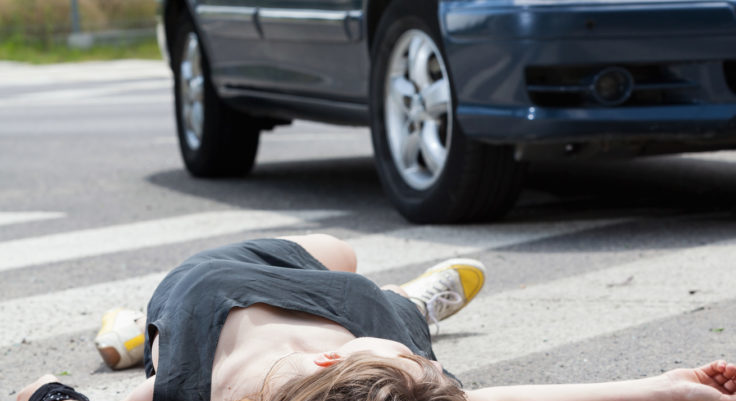Traffic accidents are represented not only by a collision of cars, but also even by collision with pedestrians. Such a situation can occur even at a pedestrian crossing, for example, if the driver does not notice the person or cannot stop the car for various reasons. The punishment for a pedestrian shot down at a pedestrian crossing can be different. It completely depends on what kind of damage was received by the citizen. If at all this situation ends with the death of a pedestrian, then the driver will incur criminal liability, represented by imprisonment for a long period of time.
Incident features
Each driver must give way to people who cross the road at a pedestrian crossing. This transition may be regulated or unregulated, but car owners must in any case slow down before the corresponding sign.
When considering each case, the degree of guilt of the direct pedestrian and the nature of the damage that were caused to him as a result of the collision are taken into account. The punishment for a pedestrian shot down at a pedestrian crossing can be imposed under administrative or criminal law. At the same time, it is important that the car owner, after hitting, perform some mandatory actions aimed at improving the condition of a downed person.
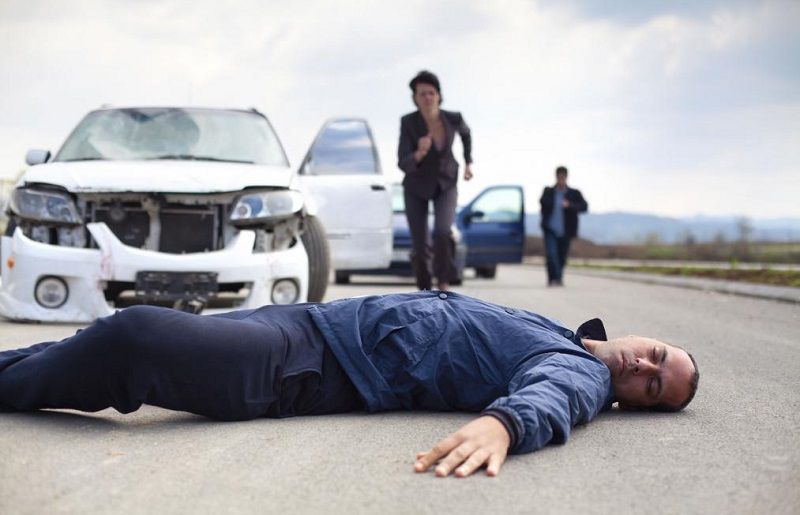
What to do in such a situation?
According to the SDA, the pedestrian crossing is intended for the free and safe movement of citizens. Therefore, all motorists must stop in front of the corresponding sign and markings. But if the driver does not have time to slow down, therefore, knocks down a citizen, then he must know what actions must be performed in order to minimize the damage done and help the person. To do this, the rules are taken into account:
- the car stops immediately;
- the emergency light turns on and the warning triangle is displayed;
- it immediately becomes clear what condition the downed person is in;
- it is not allowed to move objects related to this traffic accident in any way;
- if possible, first aid is provided to the victim;
- ambulance and police are called;
- if the damage caused is insignificant, the driver can free the carriageway so as not to create obstacles for the passage of other cars, but previously the scene of the accident is recorded on video or photographs;
- if a pedestrian needs urgent medical care, then you do not need to wait for an ambulance, it is important to try to quickly deliver him to the hospital yourself, for which you can use your own car or other drivers' cars that are traveling in the right direction;
- if the driver himself takes the victim to the hospital, then he must tell the employee of the medical institution his F. I. O., car number and passport data, since only in this case it will not be possible to accuse him of leaving the accident scene.
The punishment for a pedestrian shot down at a pedestrian crossing depends on the correctness of the actions performed by the motorist. If a citizen was taken to the hospital, the driver must return to the scene and wait for the police.
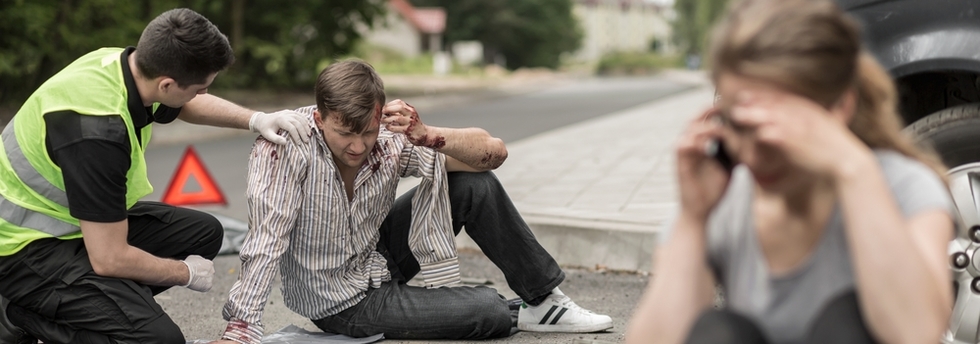
Types of liability and penalties
Each driver must understand what threatens to bring down a pedestrian at a pedestrian crossing. The consequences depend on the consequences of the incident.If the pedestrian does not receive any harm, then the driver may not be punished at all if the police are not involved. In this case, the pedestrian and the driver can independently agree on the amount of compensation.
In case of death or serious injury, criminal liability is used.
Features of administrative responsibility
When is administrative responsibility used? It is provided if pedestrians are injured of light or moderate severity. In this case, on the basis of Art. 12.24 of the Code of Administrative Offenses the following types of punishments may apply:
- in case of mild damage, a fine of 2.5 to 5 thousand rubles is paid, and the driver also loses his license for a period of 1 to 1.5 years;
- if the average severity of the damage is established, then the fine increases, therefore, it is in the range of 10 to 25 thousand rubles, and the term of deprivation of rights varies from 18 to 24 months.
A specific type of punishment is established by a justice of the peace, who carefully studies all the circumstances of this traffic accident. If the fault of a direct pedestrian who intentionally jumped onto the road comes to light, then the driver may not be held accountable. But for this there must be reliable evidence, which is most often represented by recordings from video cameras or a recorder installed in the machine.
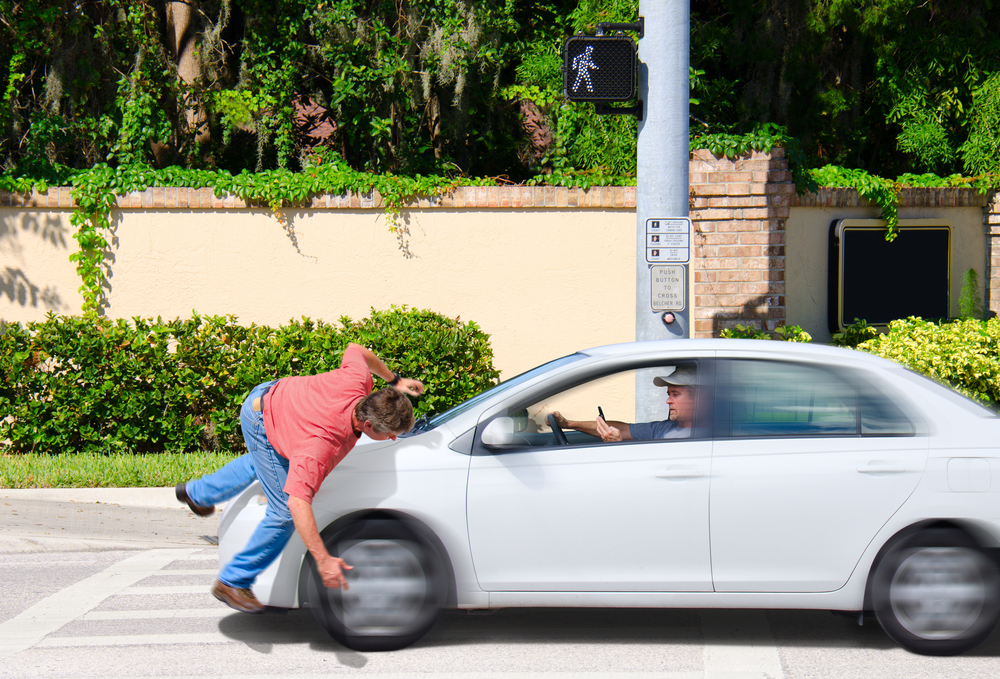
What will happen when causing grievous bodily harm?
In an accident at a pedestrian crossing, serious harm can be caused to the health of citizens. Under such conditions, the driver, even if all necessary actions are taken after the accident, bears criminal liability. The specific punishment is chosen by the judge after studying all the documents and evidence. It can be presented in the following forms:
- forced labor for up to two years;
- imprisonment for three years;
- restriction of freedom for up to three years;
- half year arrest;
- deprivation of rights for three years.
Dates are determined depending on the actual damage caused to the pedestrian.
Fatal
If the driver knocked down a pedestrian at a pedestrian crossing, this is a serious offense, so even if a person does not have any damage, he will still be held accountable.
If the pedestrian dies, then a criminal case is necessarily instituted. Based on Art. 264 of the Criminal Code, the following penalties are applied to the driver:
- forced labor up to 4 years;
- imprisonment for up to 5 years;
- cancellation of rights for up to three years.
Therefore, if the driver knocked down a pedestrian, he would have to prepare for responsibility for his illegal actions. In case of death, deprivation of liberty is almost always prescribed, and in addition, a citizen is deprived of a driver’s license by the court.
If it is established at all that the driver was intoxicated while driving, then the punishment will be tougher for him. According to Part 4 of Art. 264 shall be deprived of liberty for a term of 2 to 7 years, as well as deprivation of rights for three years.
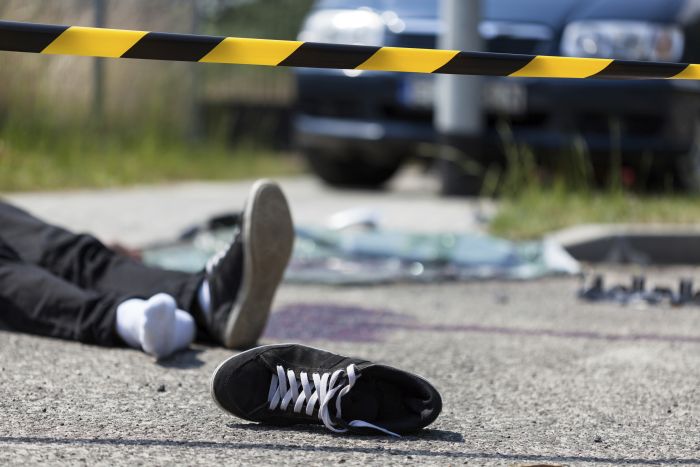
Harmless nuances
Sometimes drivers simply cannot give way, as due to bad weather conditions the braking distance increases. Often this leads to the fact that the car pushes the pedestrian a bit, without causing him any harm.
Under such conditions, the driver is not held criminally liable, but he will have to be punished for violating traffic regulations.
Compensation to pedestrians
If people at the pedestrian crossing get lost by the driver, then the victims have the right to demand from the car owner to receive a certain amount of money, represented by compensation. It can be used to pay for treatment or for non-pecuniary damage.
If the culprit of the incident has OSAGO, then the pedestrian can contact the insurance company for compensation, which is then sent to pay for treatment. But firms pay an amount not exceeding 500 thousand.rub. The remaining funds, if required to continue treatment, are transferred by the immediate culprit of the traffic accident. Money can be paid voluntarily by a citizen, but if he refuses to independently cover the expenses of the victims, then people can go to court to enforce the collection of funds.
Based on Art. 1079 GK cars provided by sources of increased danger, so even in the absence of fault on the part of the driver, he will have to pay compensation to the victims. He can only be released from liability if there is evidence that the victim had direct intent, so he deliberately jumped out in front of the car.
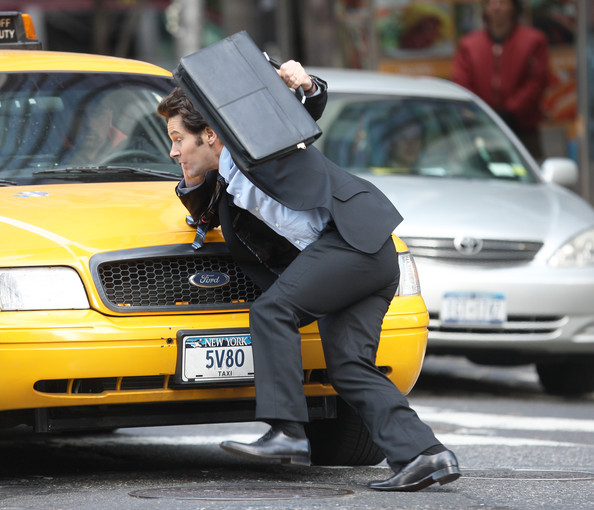
Recovery of non-pecuniary damage
According to the SDA, a pedestrian crossing is intended directly for people who can safely cross the road. Therefore, if the driver, for various reasons, runs into a citizen, then he will have to bear responsibility for illegal actions. The injured person can go to court even to recover compensation for non-pecuniary damage. In this case, the nuances are taken into account:
- even if the driver is not held accountable, the pedestrian can recover this amount of money from him;
- the amount must be justified, but the judge independently determines the final amount, for which it takes into account what kind of moral suffering the citizen had to face, as well as what mental state he is in;
- the requested amount does not depend on the fine that the originator of the accident had to pay.
During the consideration of this case, the judge may request various documents from medical institutions or the police. If even after a court decision is made, the driver refuses to pay the required amount to the victim, then the money will be forcibly collected through bailiffs.
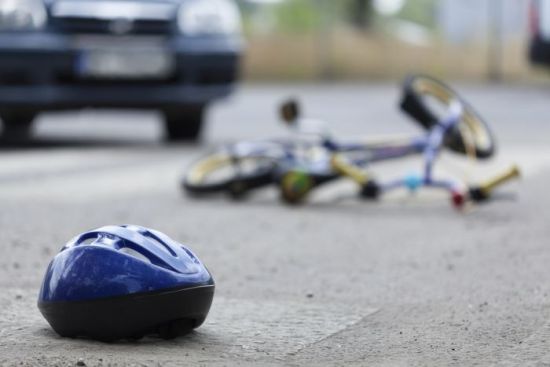
Can punishment be avoided?
The punishment for a pedestrian knocked down at a crosswalk is really harsh. Therefore, almost every driver thinks about the possibility of avoiding responsibility. To do this, the following tips are taken into account:
- in order to avoid tricks specially used by dishonest citizens, deliberately jumping under the wheels of a car, it is advisable to use a video recorder, the recording of which will serve as weighty evidence of the driver’s innocence when considering a case in court;
- if the injuries caused to the pedestrian are not too severe, it is not recommended to take him to the hospital on your own, as it is advisable to stay at the scene and wait for the doctors and police;
- if the driver is sure that his fault is missing, then after the accident, certain actions must be performed in accordance with the requirements of the SDA, as well as fix all objects on video or photographs in order to defend their rights in court.
All drivers are required to give way to pedestrians who are moving along the corresponding crossing. If they knock down a person, then no tricks and legal advice will help them avoid responsibility, and this is especially true for the situation when the victim receives serious damage or even dies.
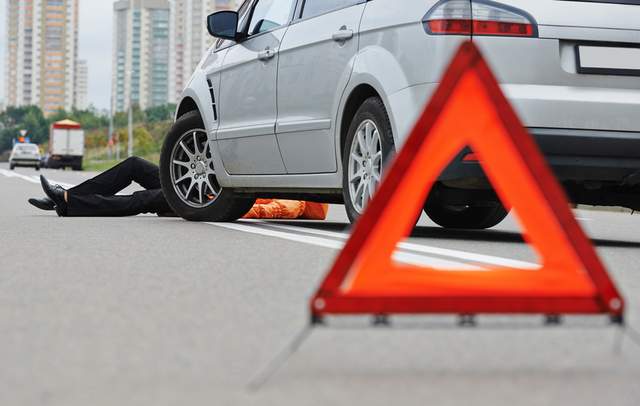
Conclusion
Hit a pedestrian is considered a significant violation on the part of any driver, and especially if an accident occurs at a pedestrian crossing. For such actions, the car owner may be held administratively or criminally liable.
The specific punishment for the violation is established only by the judge after studying all the circumstances of the case. To mitigate the punishment, the driver must collect as much evidence as possible of his innocence.
